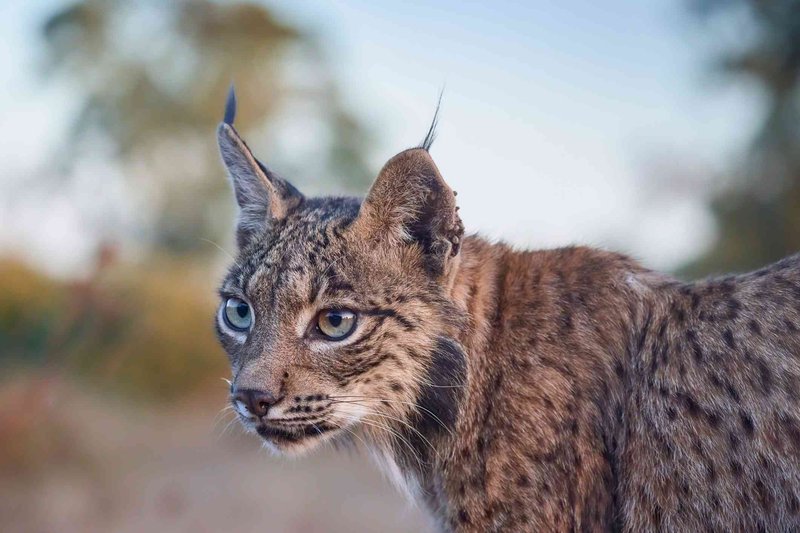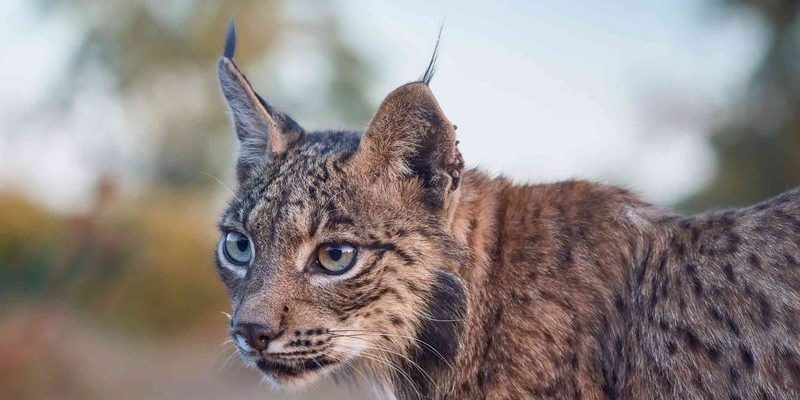
Honestly, it’s a question worth considering. After all, our world is filled with animals that spark both admiration and fear. The Iberian lynx might look fierce, but understanding its behavior can help us see whether it’s a true danger. Let’s explore this topic together, addressing the real-life risks and the biology of this unique creature.
Understanding the Iberian Lynx
The Iberian lynx (Lynx pardinus) is a medium-sized wild cat native to the Iberian Peninsula. Known for its striking appearance, this lynx has a short tail, long legs, and a thick coat adorned with spots. What really sets it apart are those iconic tufted ears, which give it a distinctly regal look.
You might be wondering what makes the Iberian lynx special. Well, this species is one of the most endangered cats in the world. Its population has dramatically declined due to habitat loss, hunting, and a decrease in its primary prey: the European rabbit. This has led to intensive conservation efforts aimed at protecting the species and restoring its habitat.
In terms of size, the Iberian lynx is much smaller than a lion or tiger. Typically weighing between 8 to 13 kg (around 18 to 29 pounds) and measuring about 80 to 110 cm (31 to 43 inches) in length, it’s more comparable in size to a large domestic cat than the big cats of the African savanna.
Behavior and Habitat of the Iberian Lynx
Iberian lynxes are known for their solitary nature. They prefer to roam alone and mark their territory, which can stretch over several kilometers. These cats are primarily nocturnal, doing most of their hunting at night when their prey is active. Their keen eyesight and acute hearing make them skilled hunters, able to stalk rabbits quietly before making a swift pounce.
In terms of habitat, the Iberian lynx thrives in areas of dense scrub and open woodlands. They need a place where they can easily find cover while hunting and a reliable source of food. Unfortunately, urban development and agriculture have encroached on their natural habitats, further endangering their survival.
You might think that being a predator, the Iberian lynx would have few natural enemies. This is mostly true; however, humans are their greatest threat. Hunting and habitat destruction have forced these beautiful creatures into smaller and smaller territories, which can result in increased competition and stress.
Can Iberian Lynxes Attack Humans?
Here’s the thing: despite their wild nature and sharp claws, Iberian lynxes are not known to pose a significant threat to humans. Incidents of them attacking people are extremely rare. Most of the time, these cats see humans as a threat and prefer to avoid us whenever possible.
It’s important to realize that Iberian lynxes are primarily prey-driven hunters. Most of their time is spent searching for rabbits and other small animals, not strategizing how to take on human beings. If faced with a human, their instinct would generally be to flee rather than fight.
However, there are exceptions in the animal kingdom, and if an Iberian lynx feels cornered or threatened, it might react defensively. It’s worth noting that this kind of behavior is common in wild animals. So, while it’s improbable that an Iberian lynx would seek out a human confrontation, it’s always wise to respect any wild animal’s space and observe them from a distance.
Misconceptions Surrounding the Iberian Lynx
There are many misconceptions about wild cats, and the Iberian lynx is no exception. Some people picture these cats as fierce beasts capable of harming anyone in their path. However, the reality is much more nuanced. The Iberian lynx, while equipped with the tools for hunting, has no interest in human interaction.
Many stories about dangerous wild cats often stem from fear or misunderstanding. It’s easy to assume that a creature with sharp teeth and claws poses a threat, but let’s not forget that their main focus is survival in the wild. If their habitat is protected and their prey is abundant, they’re less likely to come into contact with humans at all.
Moreover, awareness of their behavior helps dispel fears. When you learn that these lynxes prefer solitude and are more scared of humans than we are of them, it paints a different picture. Understanding these animals can help foster respect and encourage conservation efforts rather than fear.
Conservation Efforts and Their Importance
Given their endangered status, conservation efforts are vital for the Iberian lynx. Organizations and governments in Spain and Portugal have launched several programs aimed at increasing their population. These efforts often involve habitat restoration, rabbit population management, and breeding programs.
Protecting the Iberian lynx isn’t just about saving one species; it’s about preserving the whole ecosystem. Healthy populations of predators like the lynx help maintain the balance within their environment, controlling prey populations and contributing to biodiversity.
As more people learn about the Iberian lynx and the challenges it faces, support for conservation initiatives grows. When communities rally for wildlife preservation, it can lead to positive changes in policies that protect not just the lynx but countless other species as well.
What to Do If You Spot an Iberian Lynx
If you’re lucky enough to spot an Iberian lynx in the wild, it’s essential to know how to behave. Here are a few tips for anyone who finds themselves in the presence of this exquisite creature:
- Keep Your Distance: Respect their space. Use binoculars or a camera with a zoom lens for a closer look.
- Stay Calm: If the lynx notices you, remain calm and still. Avoid sudden movements that might startle it.
- Do Not Approach: Never try to approach or feed a wild lynx. This can lead to dangerous encounters.
- Report Sightings: If you see an Iberian lynx, consider reporting it to local wildlife authorities. Your sighting could help with conservation data.
By following these steps, you can have a safe and memorable experience while also contributing to the protection of this endangered species.
Final Thoughts: The Iberian Lynx and Humans
In conclusion, the Iberian lynx is truly a remarkable creature that has captured the hearts of many wildlife enthusiasts. While it possesses the physical traits of a wild predator, it’s not inherently dangerous to humans. Misunderstandings often stem from fear of the unknown, but when we learn more about the Iberian lynx, we can appreciate its role in nature without the shadow of fear.
So, next time you hear about the Iberian lynx, remember that while it’s an impressive animal, its primary focus is survival. Embracing a deeper understanding of these beautiful creatures encourages respect and promotes efforts to protect them. After all, a world where wildlife thrives is a world worth striving for.

